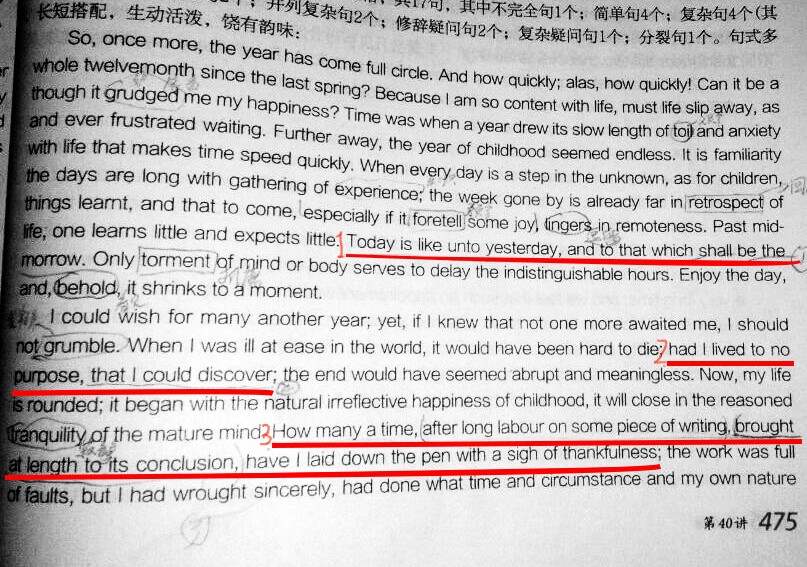3 3条难句分析
下面三句都出自章振邦英语语法教程第6版P475
1.Today is like unto yesterday, and to that which shall be the morrow.
unto和to都是介词,为什么能放在like后面?
2....; had I lived to no purpose, that I could discover ;...
前面是省略了if的状语分句,后面的that是什么?能分析为:that是代词,作discover的宾语,宾语前置吗?
3.How many a time, after long labour on some piece of writing, brought at length to its conclusion, have I laid down the pen with a sigh of thankfulness;...
brought at length to its conclusion这个插入成分不理解,首先brought的逻辑主语是什么?我找不到。

最佳答案 2022-03-01 22:38
1. like unto=similar to,是比较老的用法,用于书面语。现代英语一般仅以like 即可。similar to 会比like更正式些。注意本句中后面的that which 相当于what, 也是比较正式的用法。
2. 章振邦语法书有误,我查阅小说原文为I had lived to no purpose 这里的that,指I had lived to no purpose.作者写作时,可能是为了强调,把宾语从句提前。
这里的that,指I had lived to no purpose.作者写作时,可能是为了强调,把宾语从句提前。
3. brought at length to its conclusion= which was brought (by me) at length to its conclusion, 插入部分可以理解为补充说明some piece of writing的定语。
如果觉得我的回答对您有用,请随意打赏。你的支持将鼓励我继续创作!

- 1 关注
- 0 收藏,2476 浏览
- YCM 提出于 2022-02-28 22:54
相似问题
- 介词后面可以接状语从句吗? 1 回答
- 请问在这里enough to have done,不定式所表达的含义 0 回答
- “副词+介词”构成介词 1 回答
- 部分静态动词的过去分词作表语后接介词的疑惑 1 回答
- It is important to you / for you 1 回答
- that day 前为什么用介词 2 回答
-
 《高考英语备考1号·速效编》
《高考英语备考1号·速效编》
-
 《高考英语备考1号·写作编》
《高考英语备考1号·写作编》
-
 《高中英语晨读晚记》
《高中英语晨读晚记》
-
 《高中英语错题笔记》
《高中英语错题笔记》
-
 《零起点考大学英语》
《零起点考大学英语》
-
